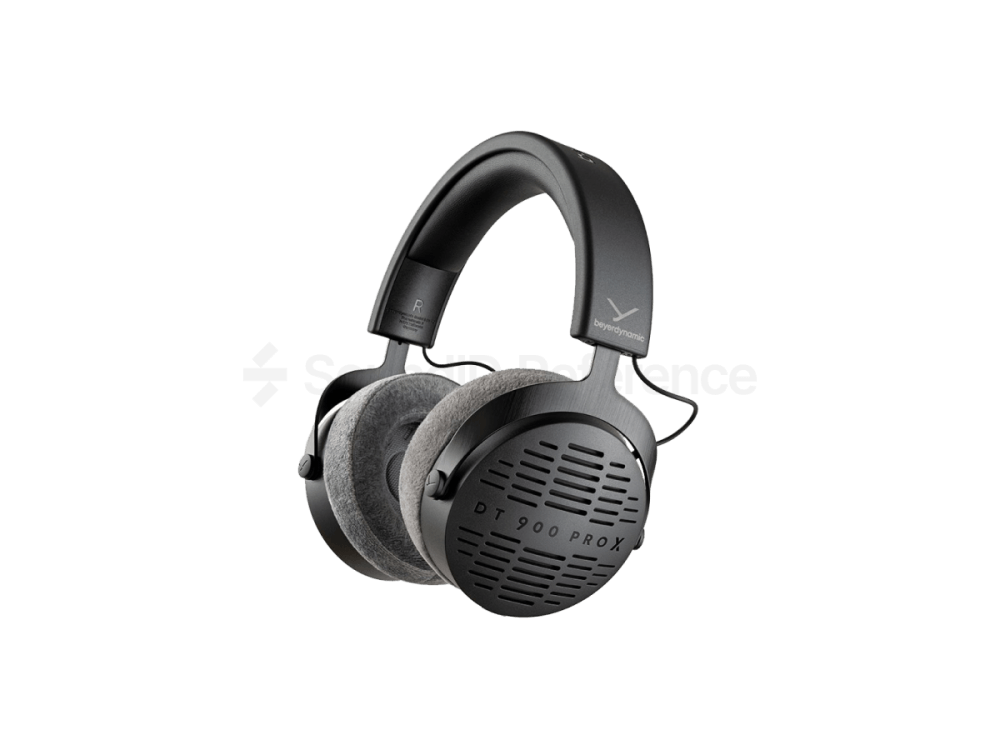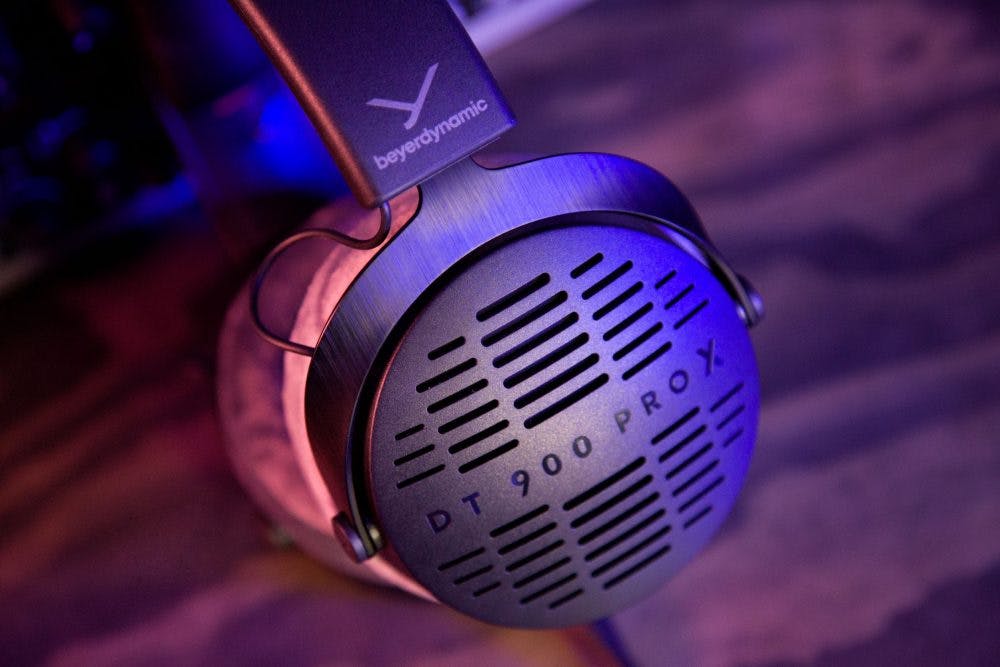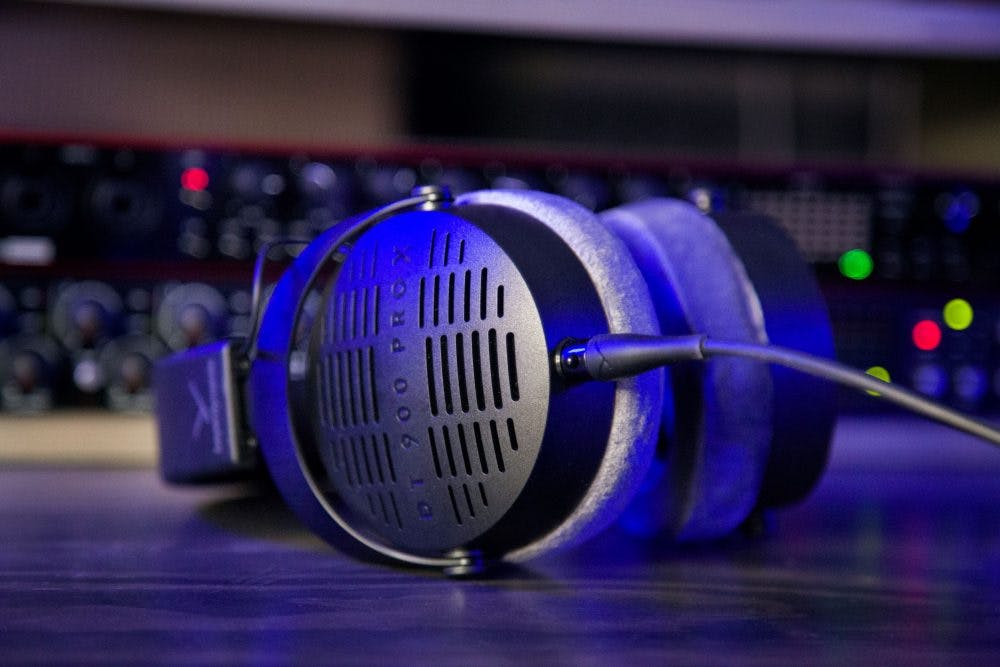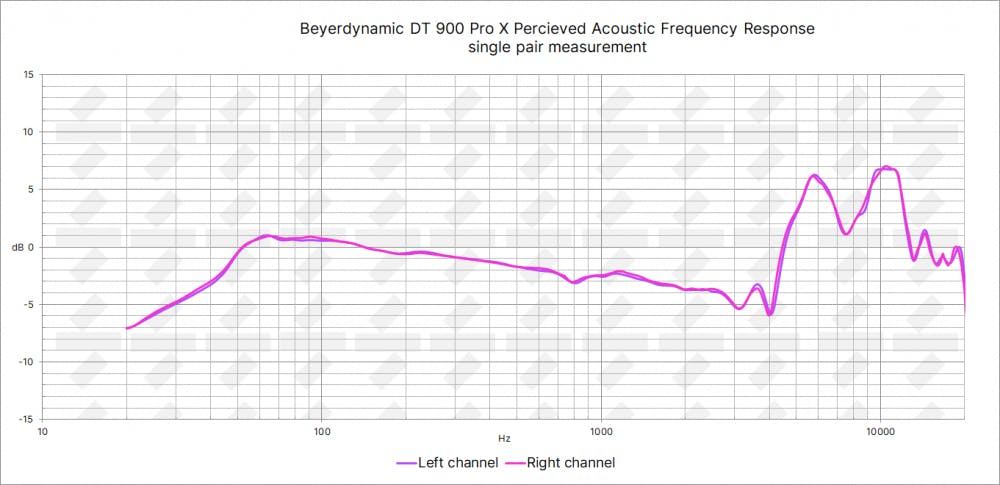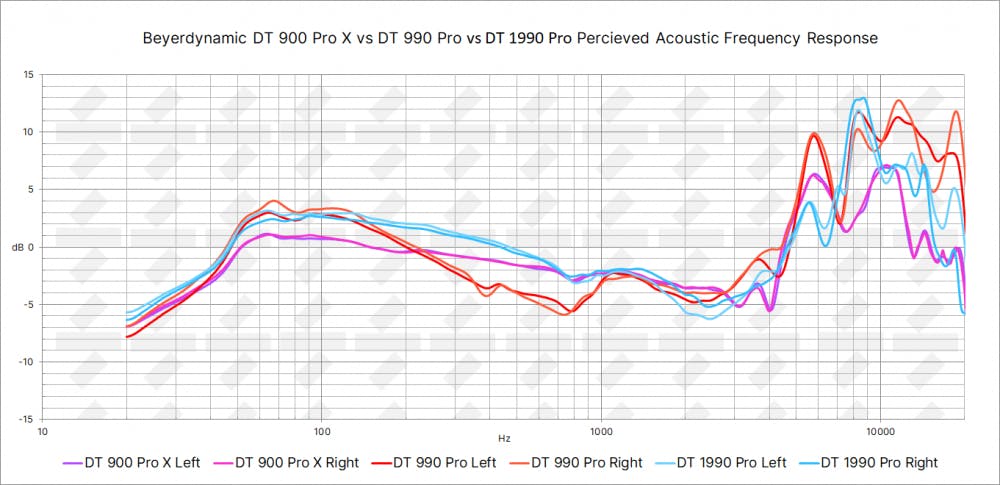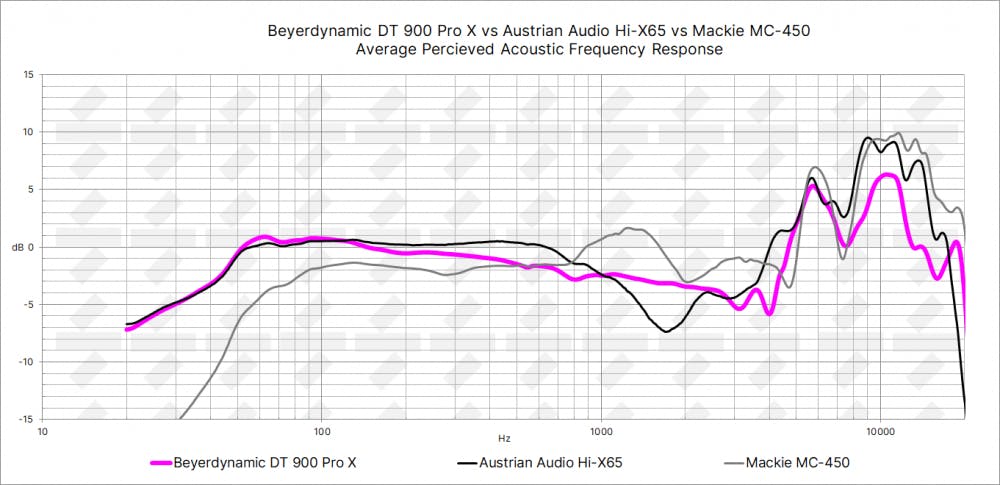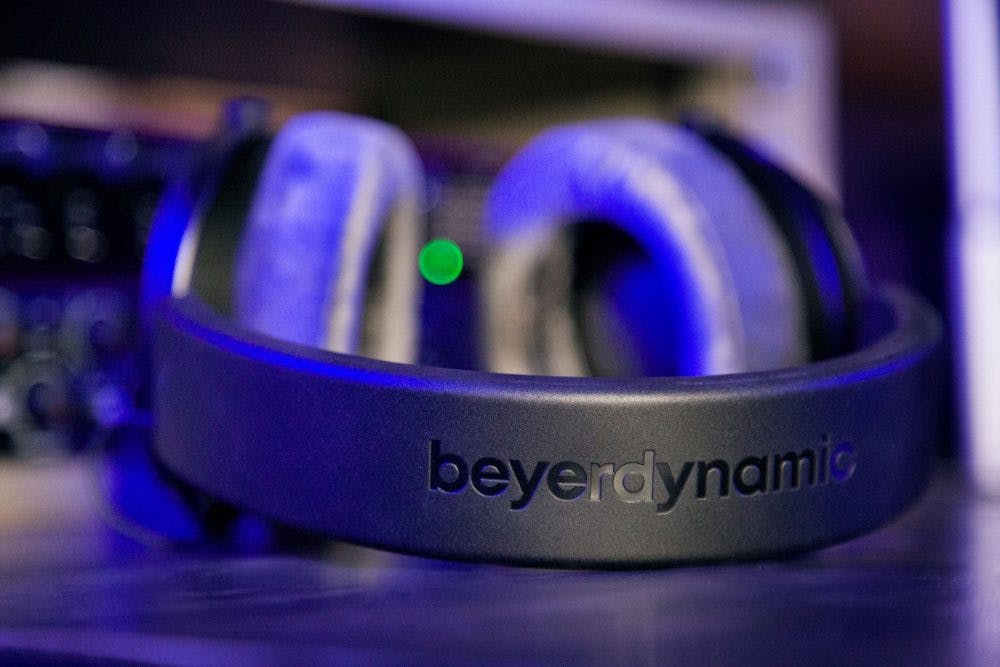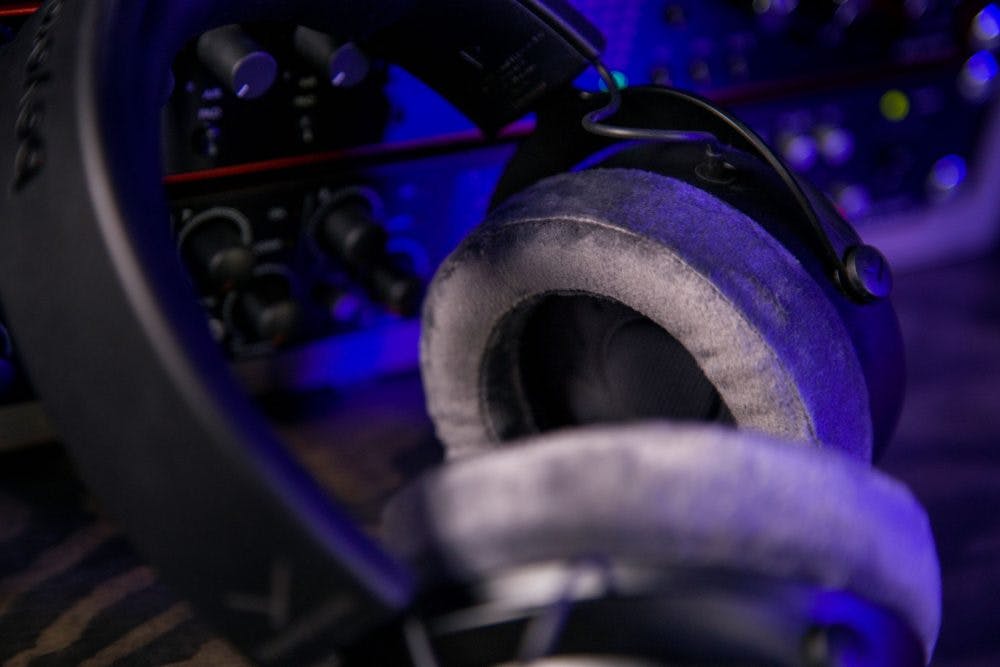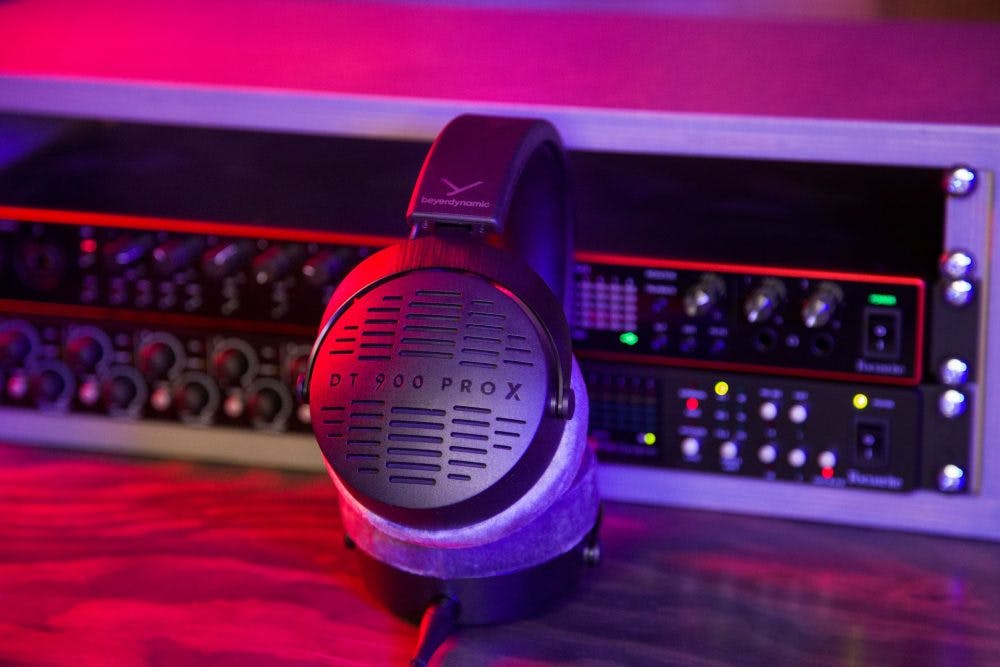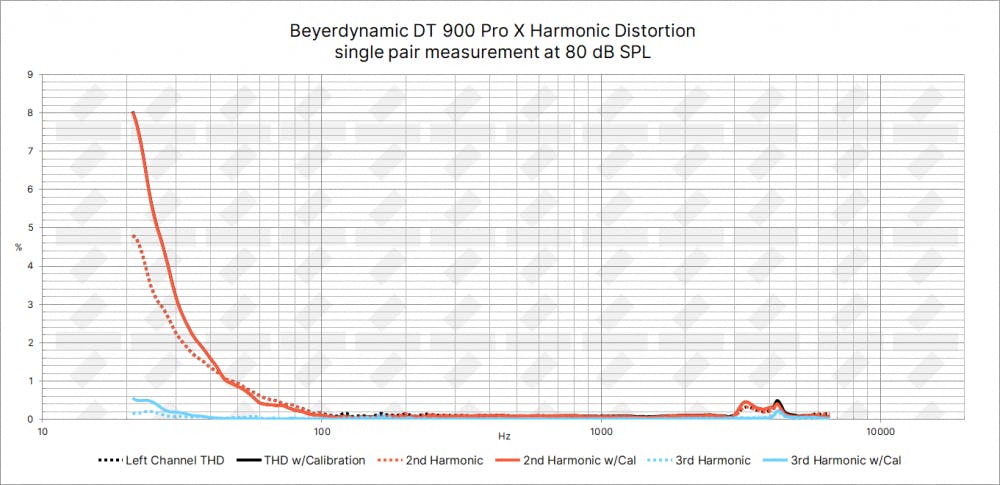Audio production workflows have evolved in recent years. For example, the iPad seems to be getting more useful in the studio with each passing day. However, studio monitor open-back headphones have always been designed with classic studio setups in mind, to perform best when connected to audio interfaces and powerful headphone amps, not low-power mobile devices. Beyerdynamic with their new DT 900 PRO X is among the first to offer open-backs suited for any workflow and has created perhaps the most versatile open headphones to date!
- Plenty of volume in any setup
- Great build
- Easily available spare parts
Pros list with SoundID Reference calibration
- Neutral frequency response
- Not the greatest adaptiveness
These, along with the Austrian Audio Hi-X65, are the only open-backs on the market right now that will provide all the volume you might need, regardless of the device you’re connecting them to, be it a smartphone, tablet, synth, or guitar processor.
The build is as great as we’d expect from a new beyerdynamic model. The Overall level of quality places them closer to the premium DT 1990 PRO than the entry-level DT 990 PRO. Apart from the brushed aluminum yokes, the rest of the parts are high-quality plastic. And speaking of high-quality, all contact points are very pleasant to touch, especially the earpads which are covered in a super plush velour.
If compared to the entry-level DT 990 PRO, there are 3 significant improvements.
First, you get a detachable cable, which is great to see as it’s usually the first point of failure. Also, since the cable connects to headphones using a common mini-XLR connection, there’s a wide variety of aftermarket cables available.
The next upgrade is the headband adjustment mechanism which feels on par with the premium DT 1990 PRO. On some pairs of 990 PROs, the yokes slide into the headband with excessive resistance, especially after some time of use. Not the case here.
And the last update that’s less obvious, but very welcome, is that earpads no longer rest against each other while the headphones aren’t worn. Let me explain why this is important. On the older designs, both 990 and 1990, the earpads will press against each other, especially if the yokes are adjusted for larger head size. It’s easy to overlook it as a non-issue, but this leads to premature deformation of the earpads, and that alters the frequency response of the headphones. If you’re using headphones with SoundID Reference calibration, this means that the calibration profile accuracy will suffer and you’ll need to replace earpads every few months to maintain it. So it’s good to see that this is fixed with the new DT 900 PRO X.
In the box, along with the headphones, you’ll find 1.8 and 3 meter long straight cables, a screw-on ¼ inch adapter, and a drawstring bag.
Let’s start with the lowest frequencies–the sub-bass extension is as good as it gets with open-back headphones, but it doesn’t mean that it’s perfect, as the lowest frequencies are lacking more than 5dB. If you’re working with sub-bass heavy material, this can be an issue that keeps you from getting the very bottom frequencies just right.
Moving up to the bass and low mid frequencies, the new Beyers remain remarkably neutral up to 400Hz. Then with a gradual slope, the high mids get carved out progressively more and more until 4kHz. While this is not ideal, at least the shape of the curve is very smooth in this region, so the introduced coloration is predictable and relatively easy to compensate for if you are aware of it.
Things do get more problematic in the treble range. Looking at the higher frequencies, we see beyerdynamic sticking to their traditional target and applying a generous boost from around 5 – 12kHz which will brighten up the top end of everything you hear.
These headphones can color some elements of your mix with a pleasant sheen and this can trick you into making a track that sounds dull and lacking in treble when played back on other systems. Or another example, when mixing using DT 900 PRO Xs, distorted guitars can sound overly harsh so based on this you may overcompensate, leaving you with a guitar sound that’s less aggressive than you were looking for. Treble is the trickiest range for DT 900 PRO Xs that will take the most time to get used to.
All these shortcomings can be easily dealt with using SoundID Reference headphone calibration, making them sound way more neutral.
When comparing the sound of DT 900 PRO X against the other “nines” of the beyerdynamic range, the DT 990 PRO and DT 1990 PRO, it’s evident that these models are tuned for a similar target. PRO X proves to be the most neutral of the 3 with the flattest bass and mids and the least aggressive highs.
A similar trend continues if we switch out the other Beyer models with the two efficient open-back rivals, the Austrian Audio Hi-X65, and Mackie MC-450. PRO X is the most neutral option with the competition showing heavier coloration in the 1 – 3kHz range and a more significant high-frequency boost.
Beyerdynamic doesn’t disappoint once again! Channels are matched beautifully! All but one of the measured pairs were practically identical and even for the least accurate one, the issues were only 1dB in magnitude.
All 4 people who tried out the 900 PRO X for at least a couple of hours had no critical issues and found them to be very comfy.
That’s due to a more comfortable headband. Other than that, they all feel very similar on the head, and truth be told, all beyerdynamic open and semi-open Pro headphones are very well ventilated, don’t exert excessive pressure on the user’s head, and can be worn for hours on end.
At the moment, there are only two other open-back models that offer so much volume regardless of the device they’re connected to – Mackie MC-450 and Austrian Audio Hi-X65. At $300/€250 DT 900 PRO Xs are in between the two, not just in terms of price, but the build quality as well. When it comes to sound though, Beyers win with a more neutral frequency response curve than the competition. As a whole, DT 900 PRO X offers the best value among its direct rivals.
It’s not the prettiest of graphs we’ve seen for open-back headphones, but there’s nothing to worry about. Our listening tests showed no audible distortion. The sub bass sounds clean, and the rest of the frequency range does the same.
How accurate and consistent is the correction effect among different listeners?This is the weakest point of the DT 900 PRO X. It’s still very good, and we don’t expect critical issues. It’s just that other open and semi-open back Beyers perform better in this regard, as do Sennheiser HD 600 series headphones, Audio-Technica ATH-R70x, and AKG K612 Pro. If you’re not ready to risk a few percent of accuracy, we recommend one of the aforementioned models over DT 900 PRO X.
How much do they differ pair to pair in terms of frequency response?Pair-to-pair consistency is as spotless as the left-to-right channel matching. In terms of manufacturing consistency, PRO Xs are among the very best models we’ve ever seen. This is terrific as it also leads to a highly accurate SoundID Reference model average calibration profile.
Rating
Conclusion
If you’re after headphones that’ll provide enough volume regardless of the device you’re connecting them to, and don’t mind the lack of sound isolation, DT 900 PRO Xs are the best option on the market. In typical beyerdynamic fashion, they offer great build quality, easily replaceable spare parts and they’re comfortable for long hours in the studio. The frequency response also follows beyerdynamic tradition which means that the higher frequencies receive a generous boost, yet it’s more conservative than with the older models and the direct competition from Mackie and Austrian Audio. When used with SoundID Reference the frequency response is flattened out and they perform beautifully! However, if you’re only going to use your headphones with audio interfaces and other devices with powerful headphone amps, the G.O.A.T. headphones —Sennheiser HD 650, beyerdynamic DT 880 PRO, Audio-Technica ATH-R70x—offer even higher levels of accuracy when used with SoundID Reference due to the superior adaptiveness.
To calibrate your DT 900 PRO Xs, purchase headphone calibration software SoundID Reference or send them in for individual calibration.
For more information about beyerdynamic headphones, continue reading our reviews – DT 240 Pro, DT 770 Pro, DT 880 Pro, and DT 990 Pro.
Final Rating
Calibration Enabled
Calibration
